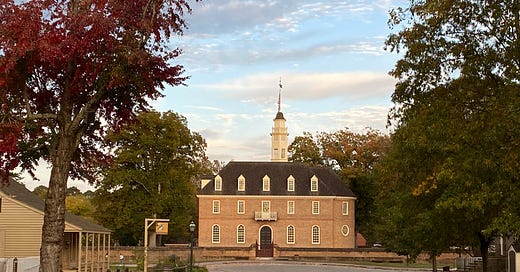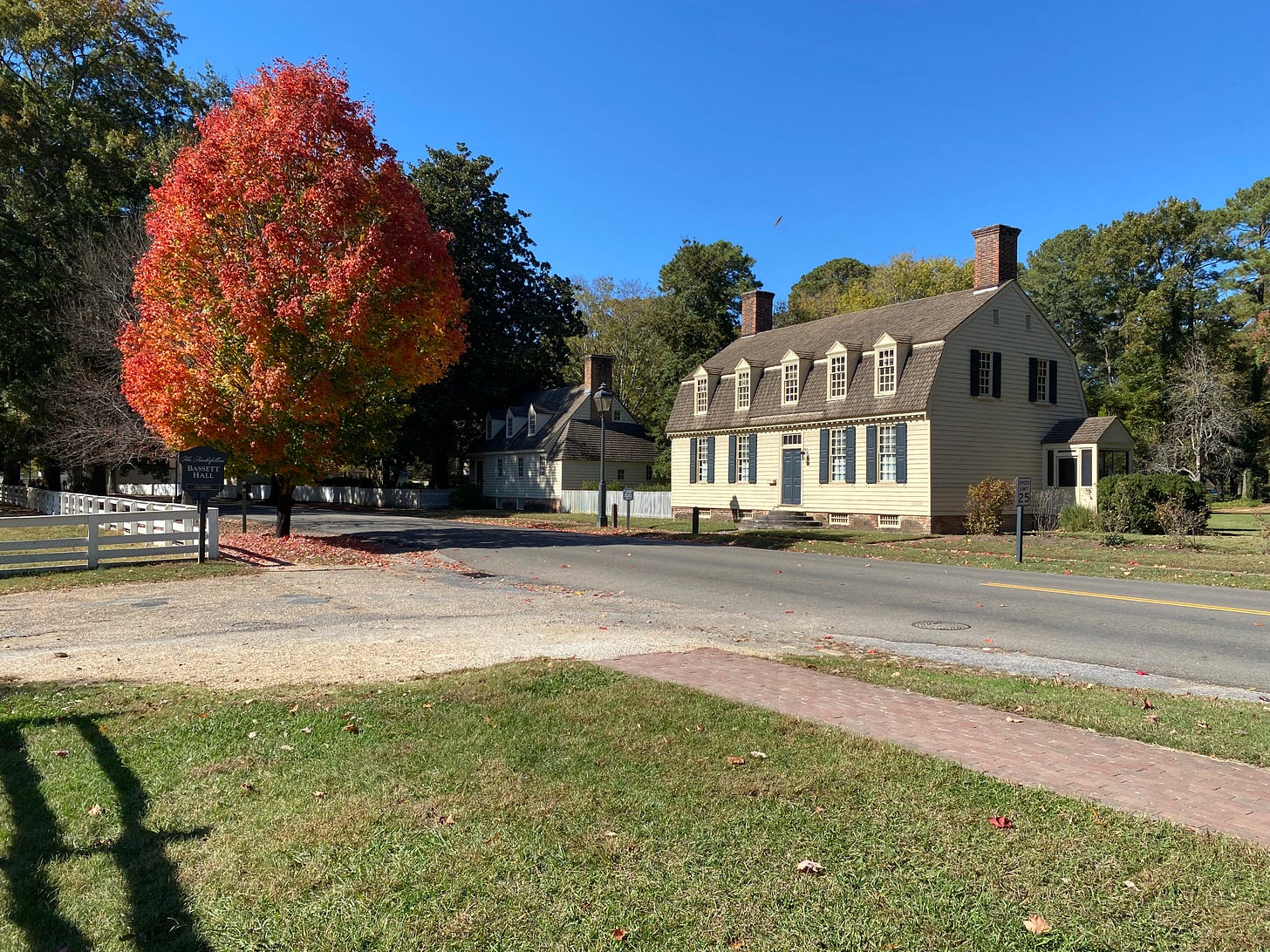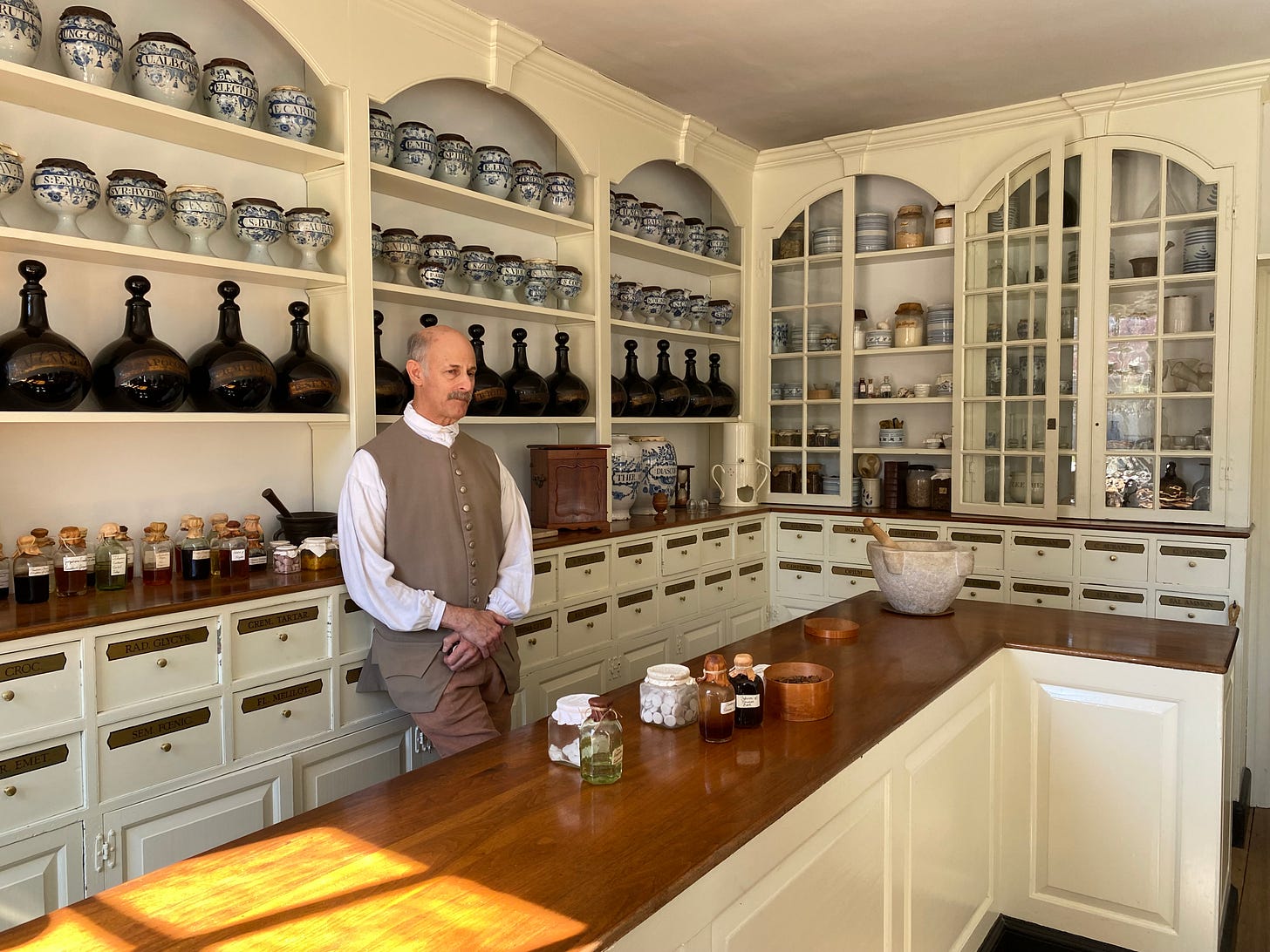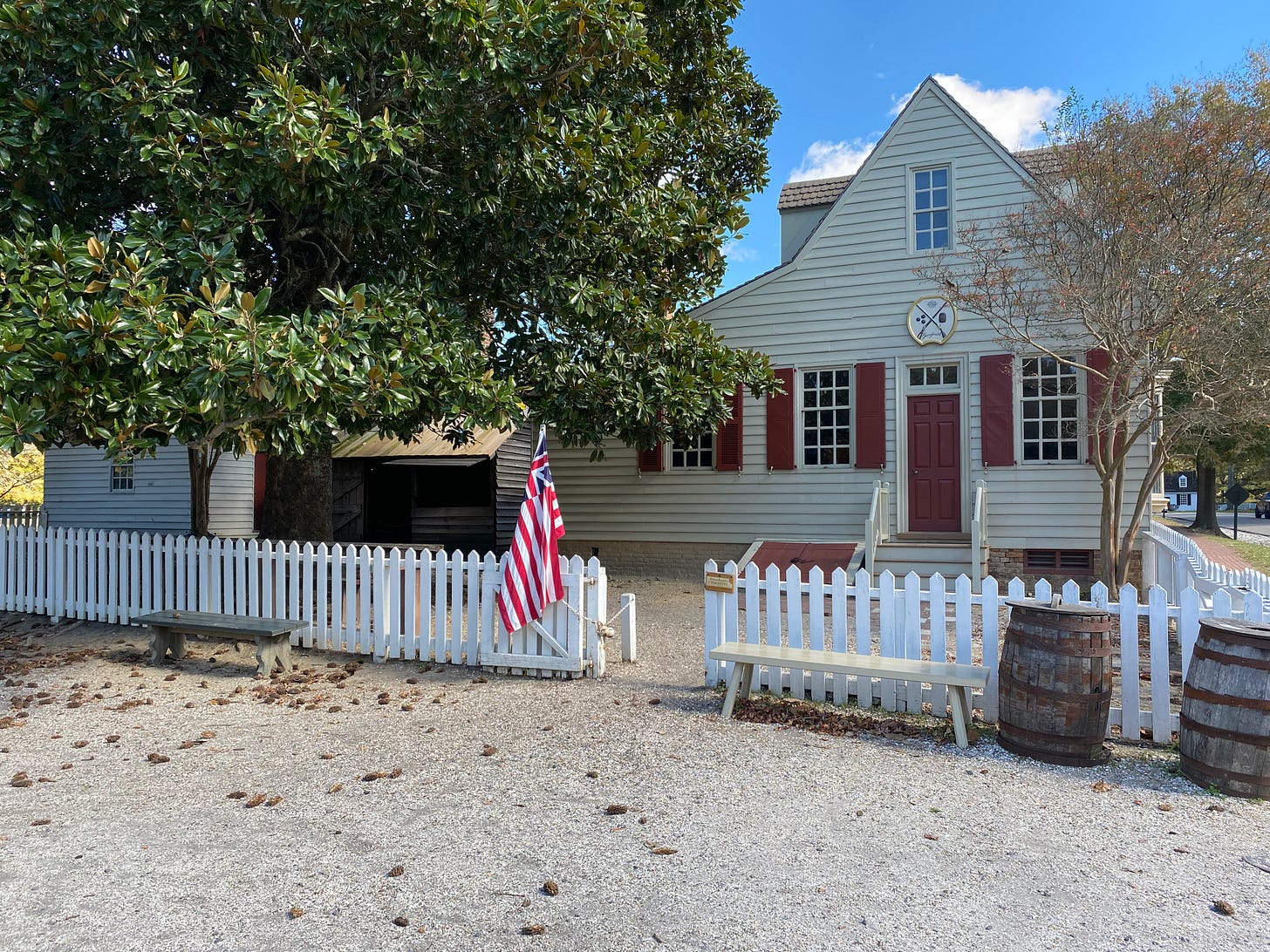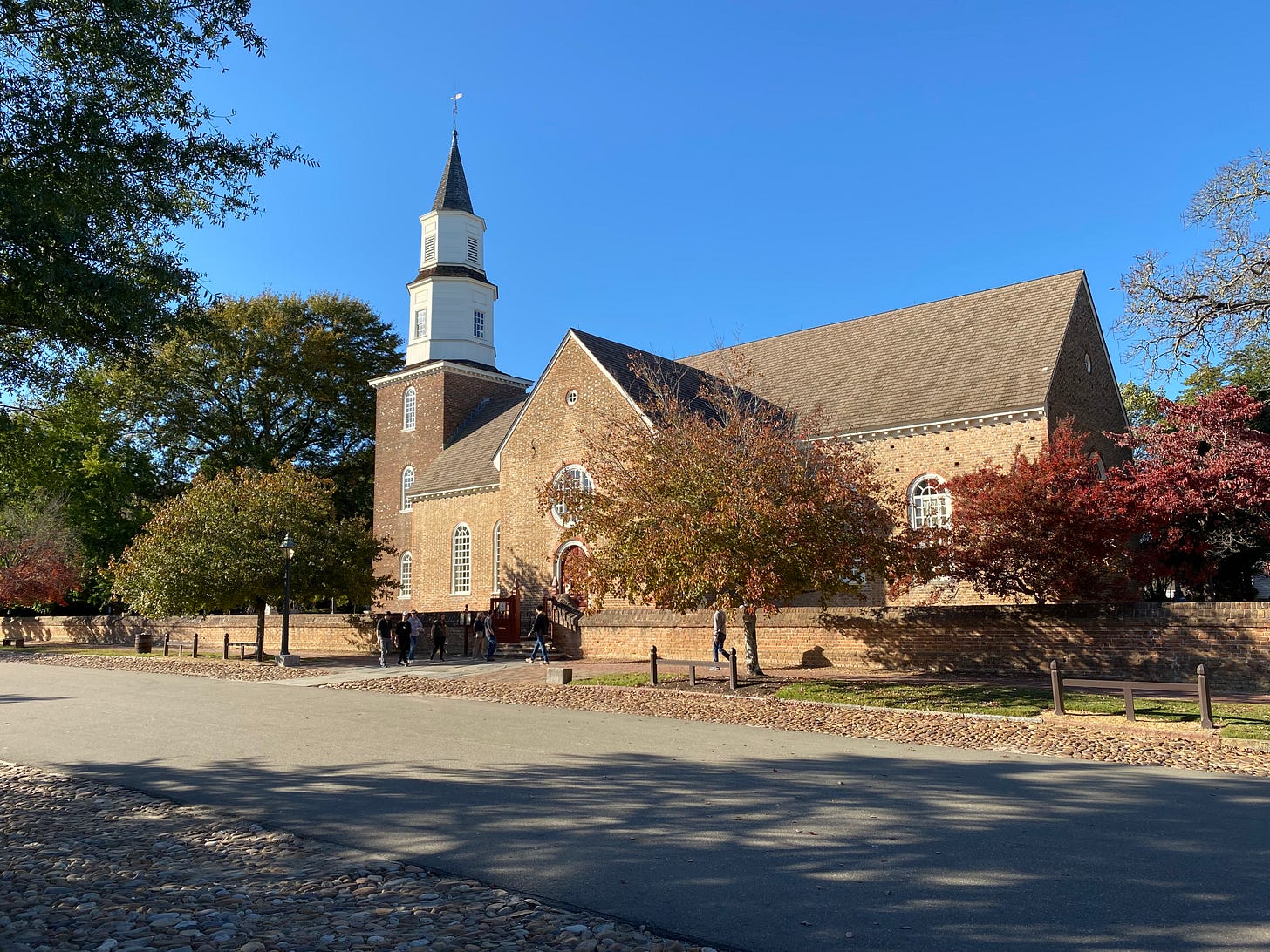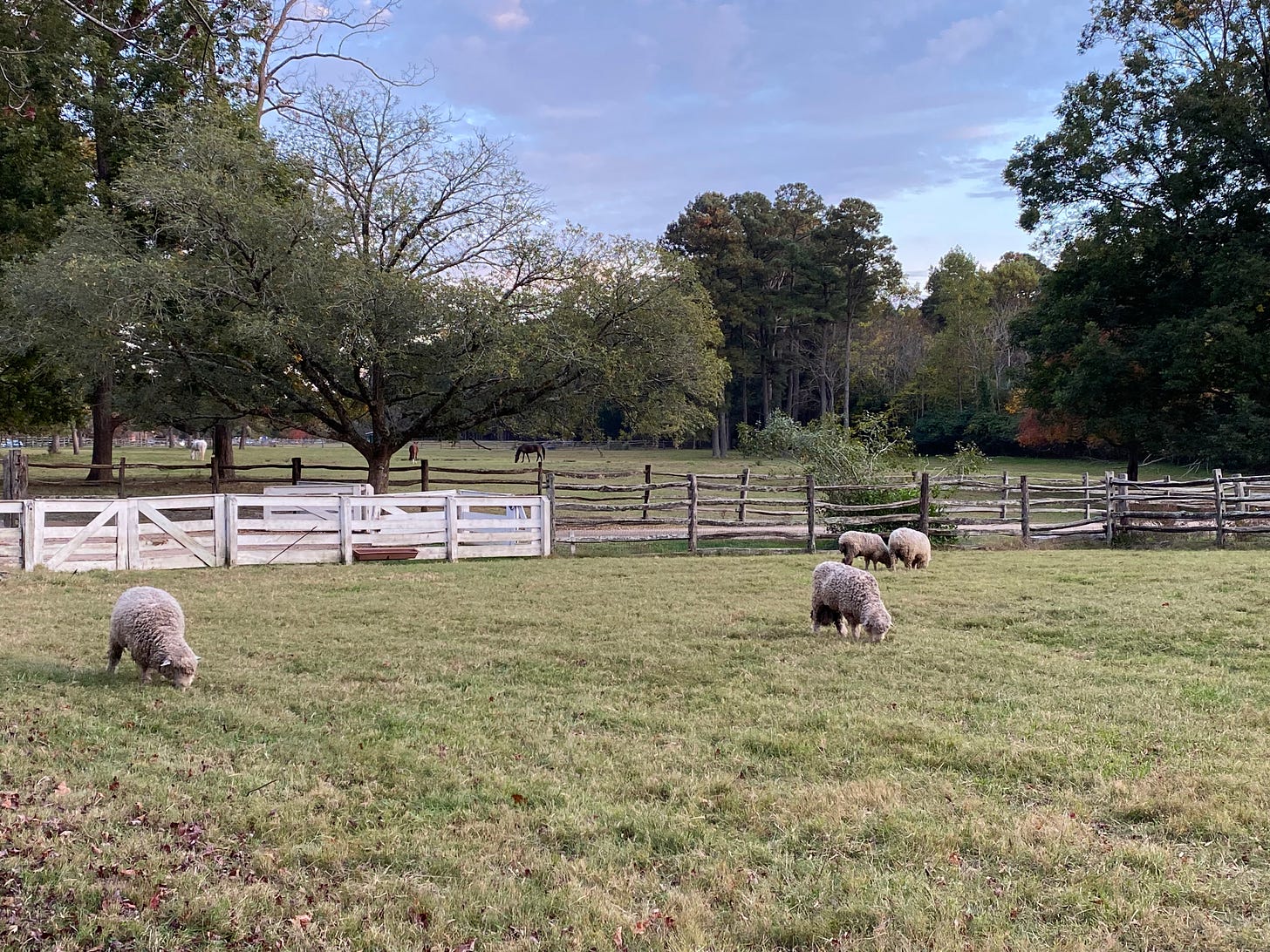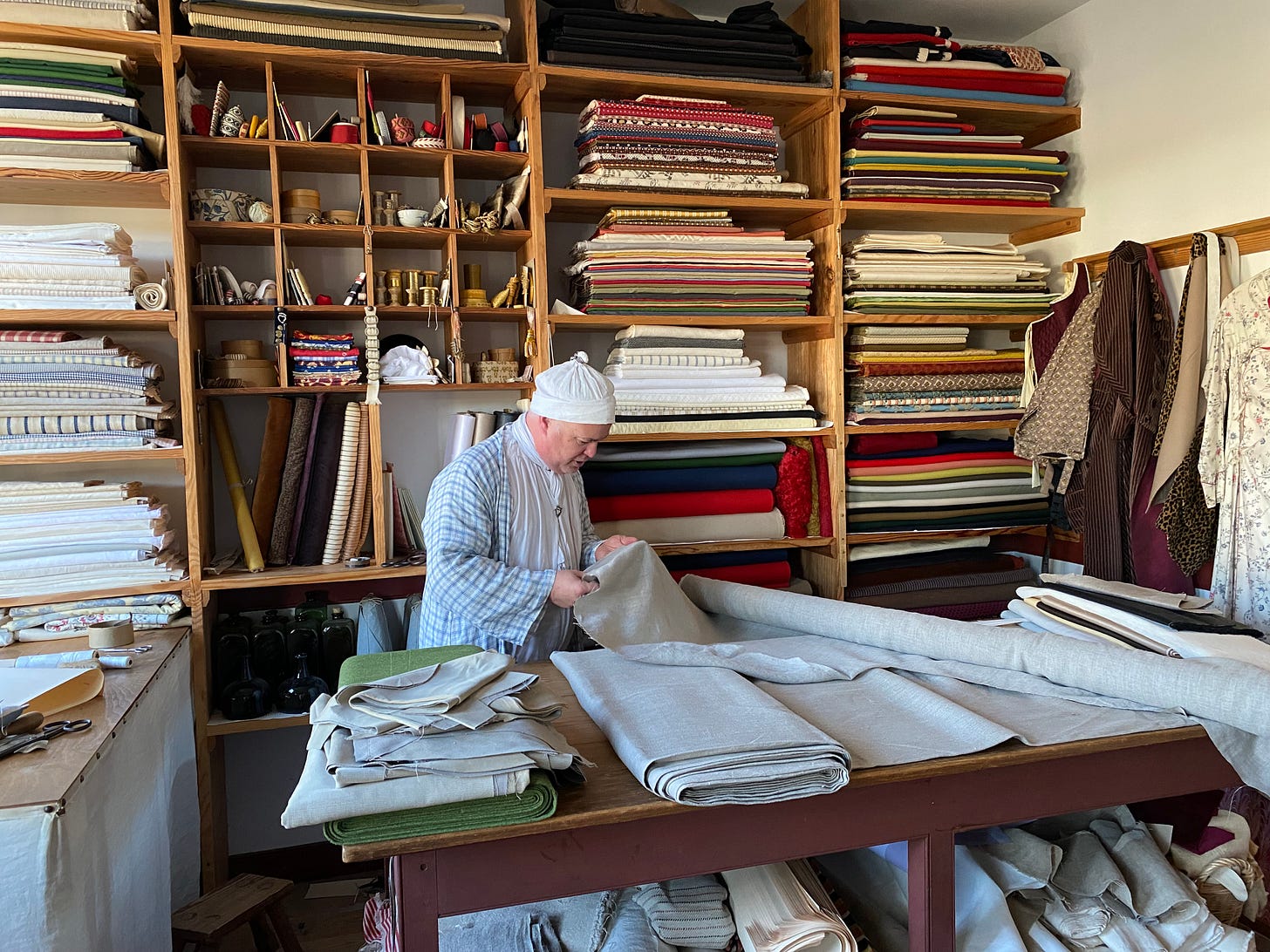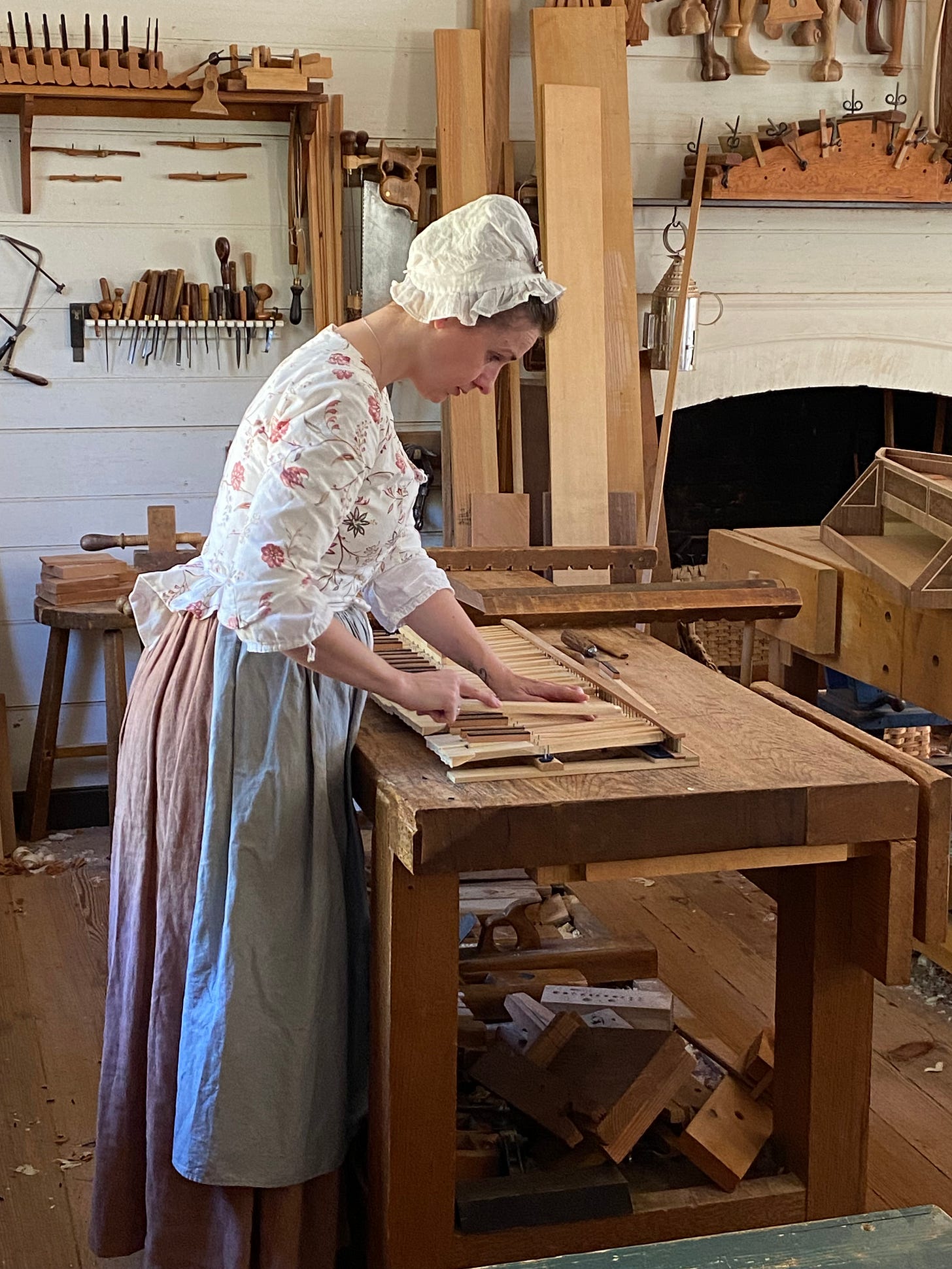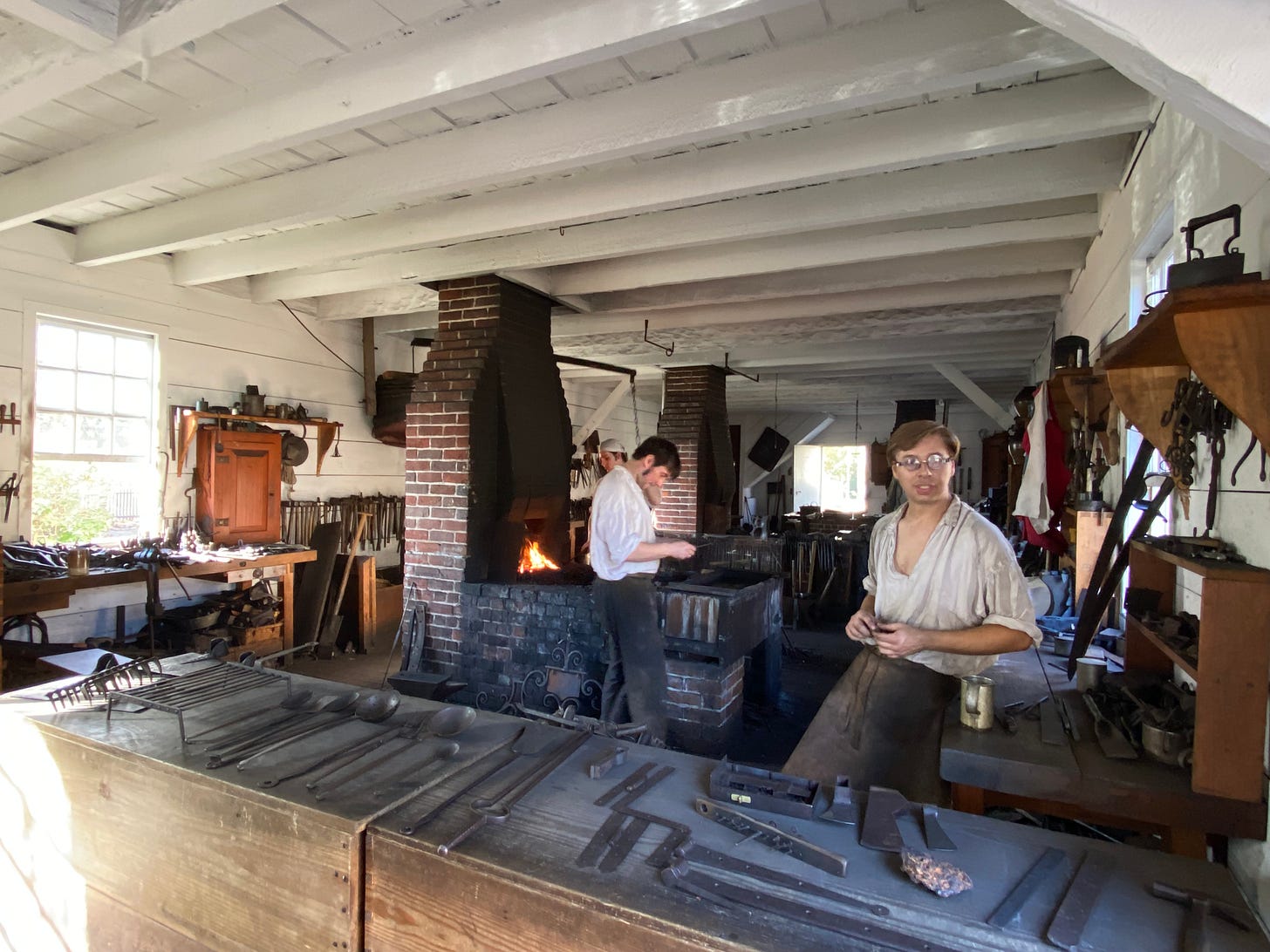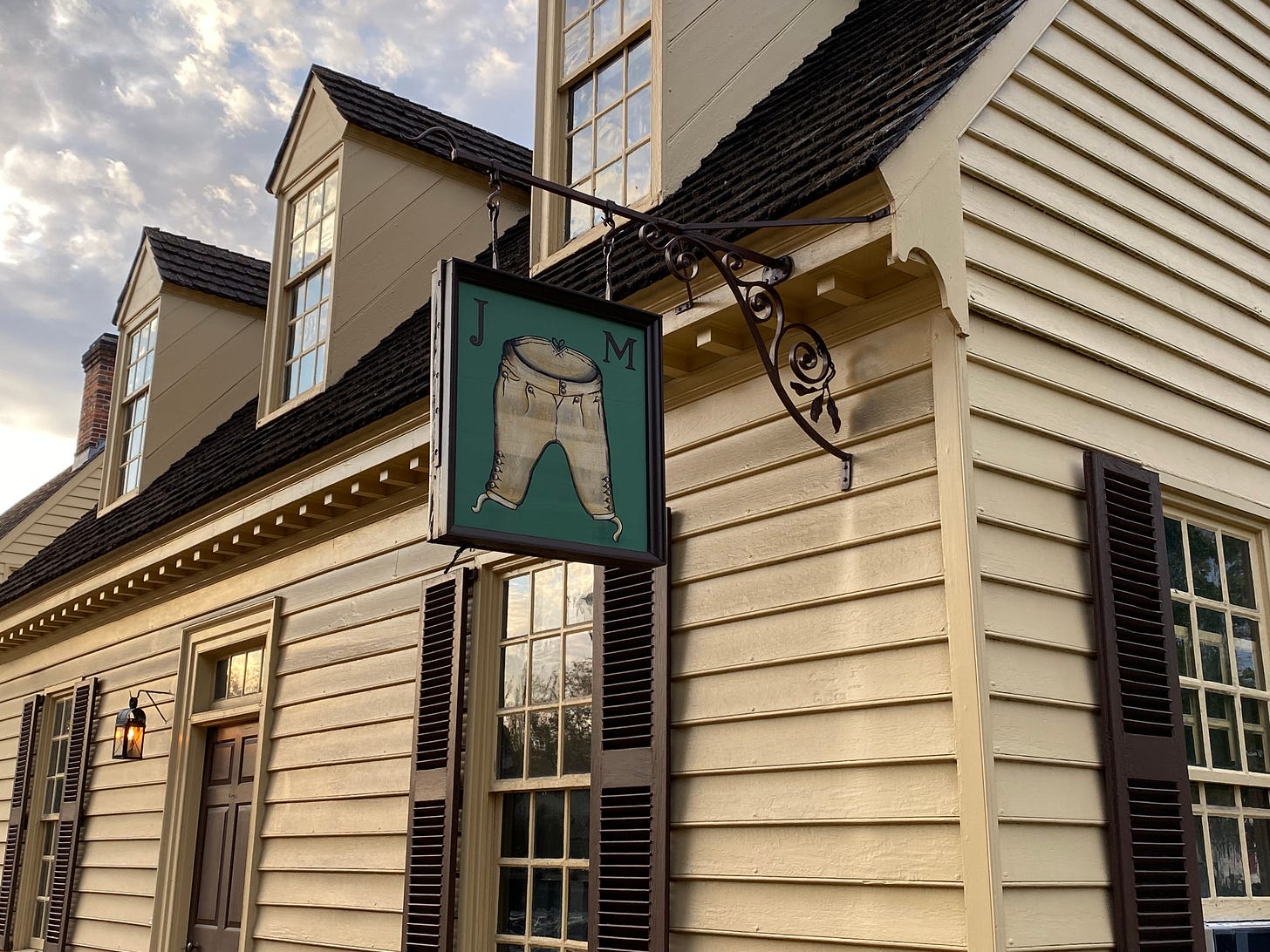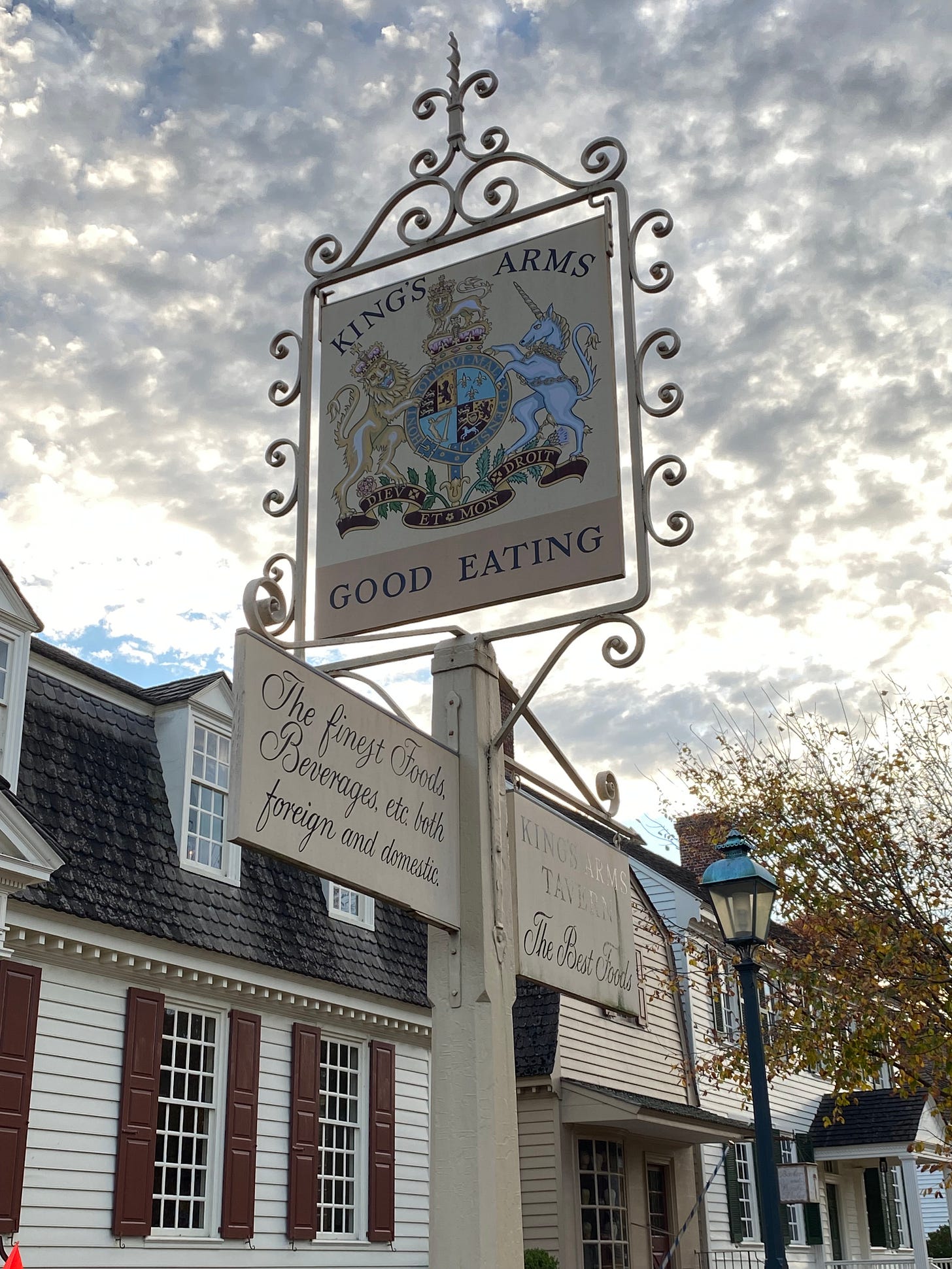Our first visit to Williamsburg, Virginia was 10 years ago, and even after perusing the Colonial Williamsburg website and an array of related articles and reviews, I didn’t know quite what to expect.
I knew it was a historic place. Williamsburg was the capital of Virginia when it was the largest and most influential of the British colonies in the “New World,” which was anything but new, of course, to the indigenous people who had been thriving in the Americas for thousands of years before European traders showed up. Somehow, this historic town had become an “attraction,” and I wasn’t sure how I felt about that, beyond curious.
Full disclosure: I am not a history buff. As I wrote here recently, history was arguably my least favorite subject in school, probably because I was terrible at memorizing names and dates and struggled to feel a real connection to big events of the past.
The idea of visiting a place described as “the world’s largest living history museum” was intriguing but also confusing. I had at least a faint hope that our visit to Williamsburg might help me feel more connected to American History, but I wasn’t holding my breath.
The Visitors’ Center where you buy your tickets and park your car was huge and set apart from the historic village. There were single and multi-day options, a few of which also included admission to the local amusement park, Busch Gardens.
It wasn’t entirely clear to me why we even needed tickets, as you can enter the historic area without one. Locals, including university students from nearby William & Mary, often run there in the mornings. Some streets are restricted to horse and foot traffic, but one of the three main roads through the colonial capital, Francis Street, is open to vehicular traffic 24/7.
Colonial Williamsburg (or CW, as some locals refer to it) is a massive ongoing restoration project that began in 1926 after American financier and philanthropist, John D. Rockefeller, Jr. took an interest in it, having been sold on the idea by Dr. William Arthur Rutherford Goodwin, an avid amateur historian and Episcopal priest who served as rector of Bruton Parish from 1902-1907. Goodwin returned to Williamsburg in 1923 to serve as director of an endowment campaign at the College of William & Mary, which undoubtedly gave him access to more wealthy potential donors than he otherwise might have had. Henry Ford said no to the project, but Rockefeller thought it a worthy idea.
Like many historic towns in the US, Williamsburg had fallen into an extended period of decline after its heyday, which in this case was around the time of the American Revolution, just before Virginia’s capital was moved inland to Richmond in 1779. One of the restored CW shops I visited showed us a photo of when the building was used as a gas station.
The initial restoration efforts focused mostly on buildings in the original colonial town, but the goals of the project gradually widened. Today, there is an emphasis on how people lived and thought in those days—not only famous Virginians like George Washington and Thomas Jefferson, but everyday Americans, including enslaved and native people.
I was particularly taken with the historic trades program in which some CW staff learn the skills and trades commonly seen in colonial times. Everything from blacksmithing to wigmaking to weaving to bookbinding—some 20+ colonial skills and trades—are on display. The interpreters in period costumes (some of which are handmade by those tradespeople) don’t just pretend to do the kinds of things colonial settlers might have done, they actually do them. Better yet, you can converse with them about those trades and other aspects of colonial living as you explore various shops and homes in the 301-acre historic district.
Your ticket grants admission to dozens of fascinating sites, not all of which are open every day. You watch for which ones have the Grand Union Flag posted outside to know which doors you can enter. The largest and most important buildings, such as the Governor’s Palace, Courthouse, and the Capitol are open every day, as is the Art Museum. Bruton Parish Church, at the corner of the Palace Green, is still an active Episcopal congregation, and I enjoyed 3 concerts in the sanctuary during our last visit. I wanted to also attend Choral Vespers there with Bill on All Saints Sunday, but I had students scheduled at that time.
Many of the CW interpreters are experienced historians, conservationists, or actors with an obvious interest and background in history. Only a few, known as Nation Builders, portray specific characters—historic figures like Washington and Jefferson or documented early residents of CW who are less well-known but played an important role in shaping its history, such as Gowan Pamphlet (an enslaved preacher) or Clementina Rind (publisher of the Virginia Gazette) and offer stage presentations at scheduled times. But most interpreters serve as tradespeople, shopkeepers, or tour guides who know their subjects well and are eager to convey a bit about what life was like there in the 18th century, depending upon one’s station in life.
Our first visit in 2013 was nice, but I didn’t feel like I took full advantage of the opportunity because it was a short trip, and we were still figuring things out. The weather wasn’t great, and walking around outside is very much a part of the CW experience. Also, we were staying a few miles away that first time, but we discovered on that trip that there were affordable places to stay within walking distance just east of the historic area and made a mental note to do things a little differently next time.
When we finally made it back to Williamsburg last spring and again in October we stayed close by and invested in annual passes. There was a meadow with horses and sheep right across the street! It was a working vacation, so I had to teach during several afternoons and early evenings, but I could stroll over and spend a couple of hours in CW most mornings, and Bill and I found some really great restaurants to enjoy together after work. We happened to be there for the kickoff of their Centennial Campaign, so there were even fireworks over the Governor’s Palace one night after the organ concert at the parish church.
What I began to do during our more recent visits that I hadn’t quite figured out 10 years ago was to actively engage with the interpreters rather than just being a passive observer. They love it when you ask questions and are happy to share what they’ve learned about what life was like as Virginia made the transition from British colony to independent state.
I noticed also that tour guides, typically in featured colonial homes, don’t all deliver the same canned speeches at CW. Each delivers his or her own stories and teachings, often with perspectives that differ a bit from their colleagues, so when I toured the Peyton Randolph House last time, for example, the experience was substantially different than our previous tour of the same property.
The tradespeople were a highlight for me. I talked with a tailor about how his work differed from the dressmaker down the street. The apothecary explained what kinds of surgery he would have done (with no anesthesia!) and the training he would have had. I learned that in Colonial Williamsburg the cabinetmaker also made harpsichords, and there was, in fact, a woman working on a spinet keyboard the day I was there.
Similarly, the mantua maker in 18th century Williamsburg also happened to be a milliner, so you could purchase your hats and other accessories in the same shop where your dresses were made. Tailors worked from patterns they created based on your measurements, while mantua makers draped the fabric directly on your body to decide how to cut and stitch it together, but both created handmade bespoke garments.
Several different tradespeople, including the blacksmith, helped me better understand the American version of the British apprentice system. I also learned which metalwork had to be done by a founder rather than a smith. Tools used by the engraver and the leather breeches maker were made right down the street and carefully marked because they are such faithful reproductions that they could easily be mistaken for genuine artifacts. Most of the wigmaker’s clients would have been men. The printer not only showed us how newspapers and pamphlets were created with his printing press but also helped put the high price of paper in the context of average wages at that time. Gunsmiths taught us the origins of so many common sayings dating back to colonial times that I’ll never think of “getting my ducks in a row” or “lock, stock, and barrel” in the same way, again.
While it’s true that I could have easily gone through life without learning why deer hide was preferable to sheep hide when making leather breeches, I picked up more than just interesting colonial trivia on our visits. My Williamsburg experience added layers of context to so many aspects of American life today and how it has evolved, from our politics and government to gun culture, the entrepreneurial spirit, and the sometimes fraught relationship between church and state. The leather breeches maker didn’t just show us how he stitched his wares together; he also talked about how the Americas were seen as a source of virtually unlimited natural resources for Europe—a perception that he thinks still lingers today. A docent at the museum and expert in military history explained why the royal governor’s decision to seize the gunpowder stored in the power magazine was such a big deal and the governor’s lame excuse that doing so lowered the risk of a slave rebellion definitely didn’t fly with the colonists.
Of the more than 500 structures in the historic area, 89 are original 18th-century buildings. A few more were moved to their current locations from outside the historic area, and hundreds were reconstructed in place based on historical records and archeological research. Not all are open to the public. A handful are still owned and lived in by descendants of the families who built them. You can even stay overnight in a (refurbished) colonial home or enjoy an authentic meal in a tavern that founding fathers frequented, if your budget allows.
On the west end of the historic district, The College of William & Mary is still going strong. Founded in 1693 under a royal charter issued by King William III and Queen Mary II, it is the oldest public institution of higher education in the US and the second-oldest institution of higher education of any kind here, second only to Harvard in Cambridge, Massachusetts, which was established in 1636.
There is value in exploring your roots, from families and communities to institutions and countries. I’ve long believed that, but these recent trips were tortoise steps toward actually doing it for me. Even for someone who didn’t particularly like history in school, it was a lot of fun—which is not to suggest that the picture was always rosey…
Colonial punishments were often gruesome by modern standards. People actually bought, sold, and leased other human beings as a matter of course. Both the Brafferton Indian School and the Bray School for African-American children in Williamsburg featured significant indoctrination as a part of their curriculum, pointedly teaching the same portions of the Bible commonly used in those days to justify slavery. Women’s rights weren’t exactly a high priority. And even land-owning white men could be dragged into court for not attending church.
Still, in spite of overwhelming obstacles and glaring imperfections, the colonists managed to pull off something truly remarkable that hadn’t been done before, which in turn inspired other countries to do similar things. I was struck by the young ages of some of these patriots who became leaders in the revolution and beyond as well as the countless unsung heroes whose labor and expertise made it possible for our founders to do so many of the things they managed to do.
The Colonial Williamsburg mission statement is: That the future may learn from the past. There are some virtual tours on the website that you might find interesting. If you have an opportunity to visit in person, I recommend it. Bill and I plan to return briefly in December to see the holiday decorations. Colonial Williamsburg is definitely a more tortoise than hare experience that will send you back home with plenty to think about.


